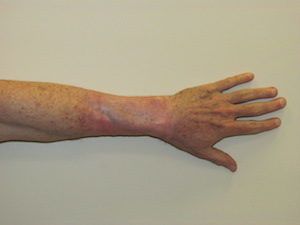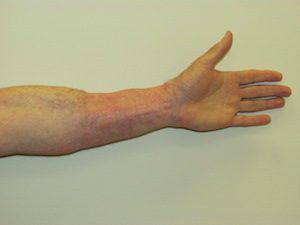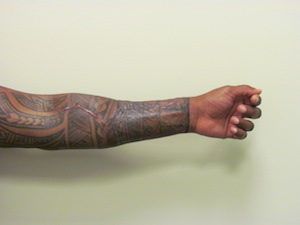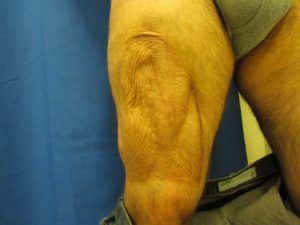Phalloplasty Overview
Our surgeons believe the standard of care in Phalloplasty* utilizes donor sites from either the radial forearm (RFF), the outside of the thigh (anterolateral thigh – ALT), or the back (musculocutaneous latissimus dorsi – MLD). These flaps heal well with good sensation due to robust blood supply and innervation.
Our surgical team includes microsurgeons and we perform “free flap” Phalloplasty. Free flaps, such as the RFF, ALT and MLD require meticulous dissection of arteries, veins, and nerves. Subsequently, after transferring the flap to where the phallus resides, the microscope is used to connect the small blood vessels and sensory nerves to the transferred flap. Like Metoidioplasty, urethral lengthening, scrotoplasty and vaginectomy can be performed at the same time.
Once appropriate would healing has been achieved, a penile implant may be inserted into the phallus to allow for penetrative intercourse.
Donor Sites
Choosing the donor site for Phalloplasty can be a daunting task. This decision should be made in conjunction with your surgeon based on your surgical goals and body type.
Radial Forearm Phalloplasty
Radial Forearm Flap (RFF) Phalloplasty is the most common type of Phalloplasty. The donor site is thin and supple allowing the flap to be easily tubed and shaped into a phallus, and the relatively hairless skin provides erogenous sensation and often allows urethral reconstruction in a single stage.






Anterolateral Thigh Phalloplasty
The Anterolateral Thigh (ALT) Flap is a skin, fat and fascia flap that has blood supplied by the descending branch of the lateral femoral circumflex vessels and innervation provided by the lateral femoral cutaneous nerve. The thickness of the skin and sub-cutaneous fat are important factors in determining the if the ALT flap is indicated. The ALT donor site may require additional procedures to obtain an aesthetically pleasing result.
Delayed ALT Flap
The delayed flap technique involves severing the blood supply to the tissue of the upper thigh that will become the phallus, with the exception the main blood supply, while leaving the tissue in its anatomical location. This will allow the tissue some time to adapt the new blood supply before being moved to the “new” location, usually about 4-6 months. *The delayed flap is an additional step in the ALT Phalloplasty outlined above.
Explore Phalloplasty:
Phalloplasty Surgeons:
- Dr. Curtis Crane (Austin)
- Dr. Ashley DeLeon (Austin)
- Dr. Richard Santucci (Austin)
- Dr. Gerhard Mundinger (Austin)
- Dr. Kenan Celtik (San Francisco)


